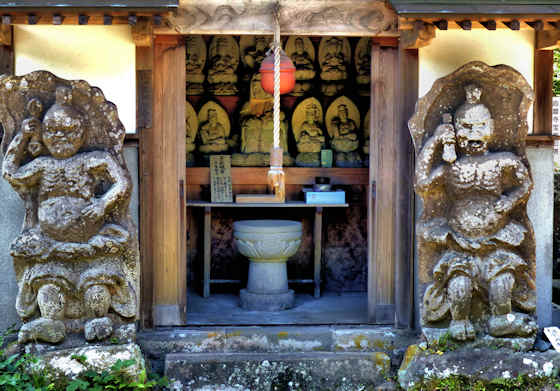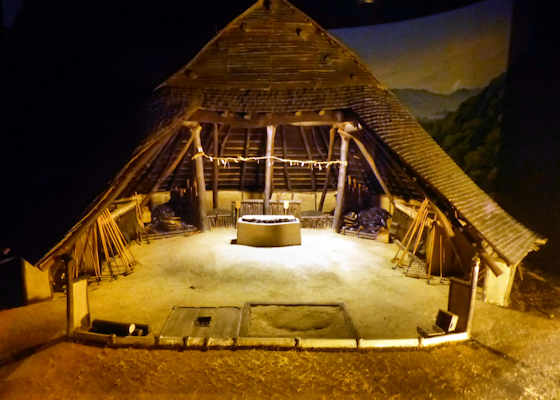Oreki-ji is a small, Tendai temple in the mountains of the Kunisaki Peninsula, and is temple number 7 on the Kyushu Fudo Myo Pilgrimage.
It is less than 3 kilometers from
Mudo-ji, temple number 6, that I had visited a little earlier.
Like
Mudo-ji, Oreki-ji is one of the Rokugo Manzan temples of the Kunisaki Peninsula that developed its own unique form of syncretic mountain religion more than a millenia earlier, and that makes the area so intriguing to visit nowadays.
Just inside the gate, next to a large Wishing Jizo statue, is a small hall with a second set of stone Nio guardians. Inside are 33 Kannon statues.
Like all 28 Rokugo Manzan temples, Oreki-ji is said to have been founded by the monk Ninmon in 718, though many historians consider him to be more a legendary figure.
It was moved to its current location in 1625. The temple declined during the Edo Period and eventually became abandoned by the mid 19th century, but was revived by monks from Futago-ji.
The hinzon is a Thousand-armed Kannon, originally held in the okunoin further up the mountainside, but moved here after a fire. The Okunoin is now a Rokusho Shrine, but I did not make the climb up to it.
There is also a fine, Heian Period statue of Fudo Myo. Originally located in its own building on the other side of the river, it is carved out of a single piece of cypress and is registered as a Prefectural Important Cultural Property.
There are many other statues inside the main hall, including an En no Gyoja flanked by 2 demon servants ( photo 5 )
Since I first started exploring the Kunisaki area many years ago it has become more popular but still most visitors only visit a half dozen major sites, but it is well worth spending more time here and exploring more deeply as it is filled with sights to see. The Kunisaki Hanto Minemichi Long Trail is a walking route with minimal support infrastructure, but it roughly follows the old Shugendo pilgrimage route. This was the second day of my walk along it.







































































